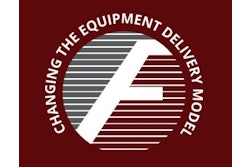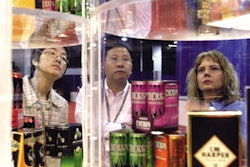
About 80% of new products fail within 18 months after they reach the market. From a contract packager’s perspective, that high failure rate presents a potential problem because a lot of equipment and capital are being invested in products that go bust.
A growing number of contract packagers are solving this challenge by renting pre-owned equipment to stretch their capital budgets and minimize the effects of product failure. Currently, the rented pre-owned segment is the fastest-growing area of the equipment marketplace. It increased 23% between 1997 and 2004.
The high percentage of failed new products is just one reason that some contract packagers are looking to pre-owned equipment as an option in protecting their capital budgets. In 2004, according to Adverting Age magazine, 13꺳 food products were introduced into the marketplace. When product manufacturers introduce new products on such a high scale, they create an urgency to get a whole lot of products to market much faster in order to stay competitive.
Using pre-owned equipment enables product manufacturers to get their goods to store shelves in half the time of new equipment, which makes it an option worth considering for contract packagers who take on a lot of short-run packaging projects.
Here’s why: An original equipment manufacturer (OEM) needs an average of six months to a year to build a new piece of machinery. But the window to act on a new-product launch, particularly short-run products that are tied to an event and in the stores for only weeks or a few months, can come and go while the ordered machine is being built. Short-window packaging deadlines can make machinery rental an attractive option to machinery purchases.
Cost comparisons
However, time is not the only constraint on the success of a new-product introduction. Many companies that have rented pre-owned equipment report that they are saving money. Renting pre-owned equipment as opposed to buying new saves up to 60¢ on the dollar. This savings provides the ability to stretch capital by allowing contract packagers to generate more than one new product introduction simultaneously for the same price as one introduction using new equipment.
For example, a new horizontal wrapper could cost upward of $86ꯠ and require 60 to 90 days for delivery. A pre-owned wrapper can be rented for about $2ꯠ per month and be in production in about two weeks. The rental bill could be paid for out of the revenue generated by the new product, creating a positive cash flow from the first day of production.
A learning curve is inherent in using all machinery. The fastest way to maximize production is to ask service technicians who are familiar with the machine to set up the machine and train the operators. This added cost pays for itself quickly through improved machine efficiency.
Pre-owned machinery age declining
The average age of pre-owned machinery has dropped dramatically over the last 25 years. In 1980, the average age of a piece of used equipment was 12 years, compared with 3.4 years old in 2005. In addition, much of the available pre-owned equipment is virtually new or has been used in one application.
The reason behind the availability of so much little-used equipment is that on average, less than 5% of machinery is ever redeployed onto a new project. With redeployment percentages low and product failure rates high, the average age of machinery will continue to plummet.
Pre-owned equipment provides food processors and packaging companies of all sizes with an opportunity to cut costs, increase production, and maintain high levels of quality.
The one common denominator to locating and using pre-owned equipment successfully is working with a reputable partner that specializes in processing and packaging equipment. Contract packagers should ask questions that provide them answers on how machines work. They should also ask the leasing company to demonstrate service-life track records for its equipment, install and test machines on-site, and provide copies of operating manuals that were originally supplied with the equipment.
Contract packagers should come away with answers that make you comfortable that the machine they are considering is a perfect fit for their ongoing processing and packaging needs. [CP]
The author, Richard Frain, is president of Frain Industries Inc. in Franklin Park, IL Contact him at 630/629-9900 or visit www.fraingroup.com.




























